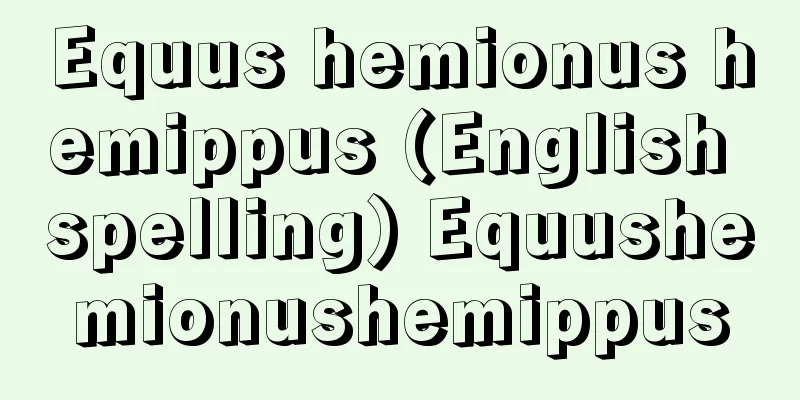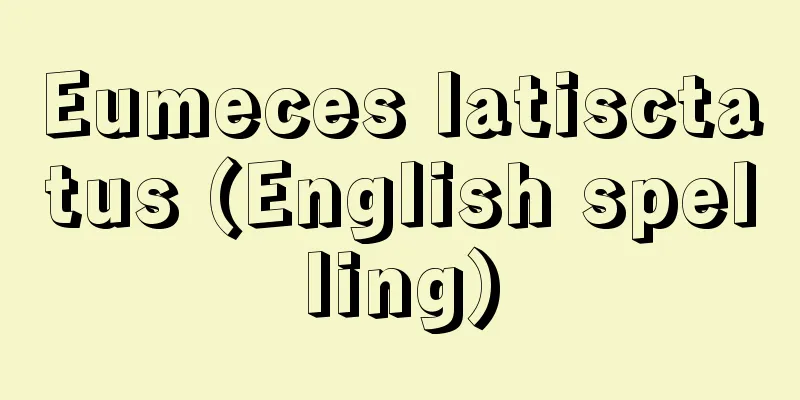Yamazaki Ansai

|
A Confucian scholar and Shintoist in the early Edo period. His given name was Yoshi and his pen name was Moriyoshi. At the age of 15, he shaved his head and took the name Zezonoshu. At the age of 29, he returned to secular life and took the name Kaemon, his Confucian title Ansai, and his Shinto title Suika. His grandfather, Yamazaki Josen (1557-1624), was from Yamazaki Village, Shiso County, Harima Province. He first served Kinoshita Higonokami Iesada (1543-1608) and died in Kyoto in the first year of the Kan'ei era. His father, Join (1587-1674), also served the Kinoshita family, and later retired to Kyoto and practiced medicine. Ansai grew up in Kyoto as the son of a ronin, sent to Mount Hiei as a child to become a monk, and became a monk at Myoshinji Temple at the age of 15. At the recommendation of Shonan Osho (?-1637), a member of the Yamauchi clan, lords of Tosa, he moved to Kyugoji Temple in Tosa, where he was expected to have a bright future, but was influenced by people of Hainanese Neo-Confucianism, such as Tani Jichu and Nonaka Kaneyama, whom he met there, and returned to Confucianism and secular life. In 1655 (Meireki 1), at the age of 38, he held his first lecture in Kyoto, lecturing on "Shogaku," "Kinshiroku," the Four Books, "The Meaning of the Book of Changes," and "Zheng Zhuan." He advocated the pure Cheng-Zhu school of thought, and with his strict academic style and Rinrei teaching methods, he trained many disciples, including Sato Naokata and Asami Keisai. In the New Year of 1657, he visited Fujimori Shrine in Kyoto to draft "Yamato Kagami" and wrote the following comment, "The prince (Toneri) is filled with deep emotion as he bows before the shrine, the volume on the age of the gods is so far-reaching and difficult to comprehend. If he sincerely seeks, there is no reason for it." Having established his ideological position that paralleled Shintoism and Confucianism, he traveled east to Edo the following year in 1658 and visited Ise Shrine on his way back. In 1665 (Kanbun 5), Ansai became a guest teacher to Hoshina Masayuki, the lord of Aizu Domain and guardian of the fourth shogun, Ietsuna, and Ansai's goal of spreading pure Neo-Confucianism throughout samurai society was largely achieved. At the same time, Masayuki became interested in Shinto as the Japanese way, and sent his vassal Hattori Ankyu (1619-1681) to Yoshikawa Koretari, who was residing in seclusion in Kamakura, to study Shinto. Masayuki then invited Koretari to his domain residence, where he was initiated into the mysteries of Shinto and received the title of Hanitsu Shrine. Ansai also visited Ise Shrine on his way eastward, and in October 1669 (Kanbun 9), he received the secret teachings of Nakatomi Harae from the chief priest Kawabe Yonaga (1602-1688). In August 1671, he received the secret teachings of Yoshida Shinto from Yoshikawa Koretari, and was given the title of Suika Reisha, which enabled Ansai to gain recognition as an independent Shinto practitioner. In 1673 (Enpo 1), he attended Masayuki's funeral and traveled down to Aizu, after which he stopped making annual trips eastward and devoted himself to writing and teaching in Kyoto. He died on September 16, 1682 (Tenwa 2) at his residence in Nijo Inokuma, and was buried in Kurodaniyama. He was 65 years old. In May of the following year, 1683, his greatest work, Wenkai Hitoroku, was published. Biographies of Ansai include "Ansai Sensei Chronology" (published in September 1835, with a postscript by Yamaguchi Shigeaki), "Yamazaki Ansai Sensei" edited by Izumoji Michijiro (vol. 2, published in 1912 by Goryosha), and "My School Chronicles" (included in the "Continued Complete Works of Yamazaki Ansai," vol. 2; edited by Inaba Mokusai, published in 1937), and his posthumous works have been collected and published in five volumes as the "Complete Works of Yamazaki Ansai." The commentary by Ikegami Kojiro (1908-1985) included in this book is considered to be the most reliable. [Shigemichi Taira July 19, 2016] The Japanese Society of Classical Studies (ed. Yamazaki Ansai Complete Works), 5 volumes (1936-1937/reprinted 1978, Pelican Press) ▽ The Biographical Society (ed. Yamazaki Ansai and His Disciples, Supplement) (1943, Meiji Shobo) ▽ The Shinto Series Editorial Committee (ed. Suika Shinto, Volume 2) (1978) [References] | | | | | | | |Source: Shogakukan Encyclopedia Nipponica About Encyclopedia Nipponica Information | Legend |
|
江戸前期の儒者、神道(しんとう)家。名は嘉、字(あざな)は敬義(もりよし)。15歳で剃髪(ていはつ)して絶蔵主と称した。29歳還俗(げんぞく)して嘉右衛門と称し、儒者号を闇斎、神道号を垂加(すいか)と称した。祖父の山崎浄泉(1557―1624)は播磨(はりま)国宍粟(しそう)郡山崎村の人。初め木下肥後守家定(ひごのかみいえさだ)(1543―1608)に仕え、寛永(かんえい)元年京都に没す。父の浄因(1587―1674)も木下家に仕え、のち京都に隠居、医を業とした。 浪人の子として京に成長した闇斎は、幼少のとき比叡山(ひえいざん)に送られて侍童となり、15歳で妙心寺の僧となる。土佐藩主山内家の一族湘南和尚(しょうなんおしょう)(?―1637)の勧めにより、土佐の吸江寺(きゅうごうじ)に転住、将来を嘱望されたが、ここで交わった谷時中(たにじちゅう)、野中兼山など海南朱子学の人々の影響を受けて帰儒還俗した。1655年(明暦1)38歳で初めて京に講席を開き、『小学』『近思録』、四書、『周易(しゅうえき)本義』および『程(てい)伝』を講じ、純正程朱学を唱導、厳密な学風と凛厲(りんれい)の教授法により佐藤直方(さとうなおかた)、浅見絅斎(あさみけいさい)など多数の門人を養成した。 1657年の正月『倭鑑(やまとかがみ)』を起草しようとして京都藤森社に詣(もう)で、「親王(舎人(とねり))強識出郡倫、端拝廟前感慨頻、渺遠難知神代巻、心誠求去豈無因」(親王、強識郡倫(ぐんりん)に出ず。端拝廟前(びょうぜん)感慨しきり。渺遠(びょうえん)知り難き神代の巻。心、誠に求め去れば、あに因なからん)と賦した。神儒並行の思想的立場をいちおう確立した彼は、翌1658年江戸に東遊し、帰途伊勢(いせ)神宮に参拝する。1665年(寛文5)には4代将軍家綱(いえつな)の後見役会津藩主保科正之(ほしなまさゆき)の賓師(ひんし)となり、ここにおいて純正朱子学を武家社会に広布しようとする闇斎の目的はほぼ達成された。同時に正之は日本の道としての神道に関心をもち、家臣服部安休(はっとりあんきゅう)(1619―1681)を鎌倉に幽居中の吉川惟足(よしかわこれたり)のもとに遣わして神道を就学させた。ついで正之は、惟足を藩邸に招いて自らも神道の奥秘を伝授され、土津(はにつ)の霊社号を受けた。闇斎も東下の途中伊勢神宮に参拝、1669年(寛文9)10月には大宮司の河辺精長(かわべきよなが)(1602―1688)から中臣祓(なかとみのはらえ)の秘伝を受ける。1671年8月には吉川惟足から吉田神道の秘伝を受け、垂加霊社の号を授けられ、闇斎は神道家としても独立の地位を認められるに至った。1673年(延宝1)正之の葬に会して会津に下向した彼は、このとき以後毎年の東下をやめ、京において著述と教育に専念した。1682年(天和2)9月16日二条猪熊(いのくま)の寓居(ぐうきょ)に没し、黒谷山に葬られた。65歳。翌1683年5月畢生(ひっせい)の大著『文会筆録』が梓行(しこう)された。 闇斎の伝記としては『闇斎先生年譜』(天保(てんぽう)9年9月刊、山口重昭跋(ばつ))、出雲路通次郎編『山崎闇斎先生』(下、大正元年、御霊社刊)、『吾学紀年』(『続山崎闇斎全集』下巻所収。稲葉黙斎編、昭和12年刊)があり、その遺著は『山崎闇斎全集』5冊に集成刊行されている。同書に付載された池上幸二郎(1908―1985)の解題はもっとも信頼すべきものである。 [平 重道 2016年7月19日] 『日本古典学会編・刊『山崎闇斎全集』全5巻(1936~1937/復刊・1978・ぺりかん社)』▽『伝記学会編『増補 山崎闇斎と其門流』(1943・明治書房)』▽『神道大系編纂会編・刊『垂加神道 下巻』(1978)』 [参照項目] | | | | | | | |出典 小学館 日本大百科全書(ニッポニカ)日本大百科全書(ニッポニカ)について 情報 | 凡例 |
>>: Yamazaki [town] - Yamazaki
Recommend
Oguri Fuyou
Novelist. Born in Aichi Prefecture. Real name Kat...
Hebei [Province] - Kahoku
A province in northern China. Facing the Bohai Bay...
Shigejiro Ogawa
A social worker and also known as a prison schola...
Tanganyika [Lake] - Tanganyika
A long, narrow lake in the eastern part of Africa,...
Kishimen (Japanese noodles) - Kishimen
A type of udon. It is also written as gokomen. In ...
Cytotrophoblast
…The fertilized egg is called a blastula. During ...
Ushikichi Nakae
A Chinese scholar and thinker in the Taisho and S...
Robert Applegarth
1834‐1924 British trade union leader. Son of a Yor...
Nicotine - nicotine
It is a pyrimidine alkaloid that was first isolat...
Chrysanthemum flag
…Furthermore, in February, the Tosei Daitoku-fu w...
Akamon Clique - Akamonbatsu
...In Japan, the phenomenon of graduates of certa...
Isolated point
(1) Let S be a topological space, M be a subset of...
Eliade, Mircea
Born: March 9, 1907, Bucharest [Died] April 22, 19...
card board
...Includes index cards, bond paper (a hard, firm...
Ypres - Ieper (English spelling)
Ypres is an industrial city in the northwest of B...









